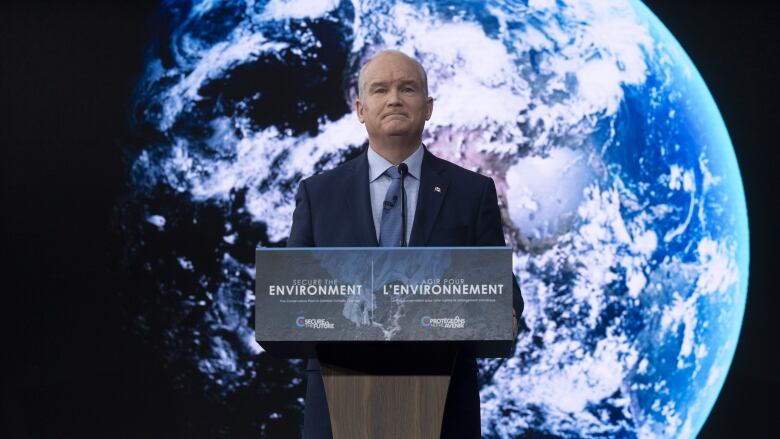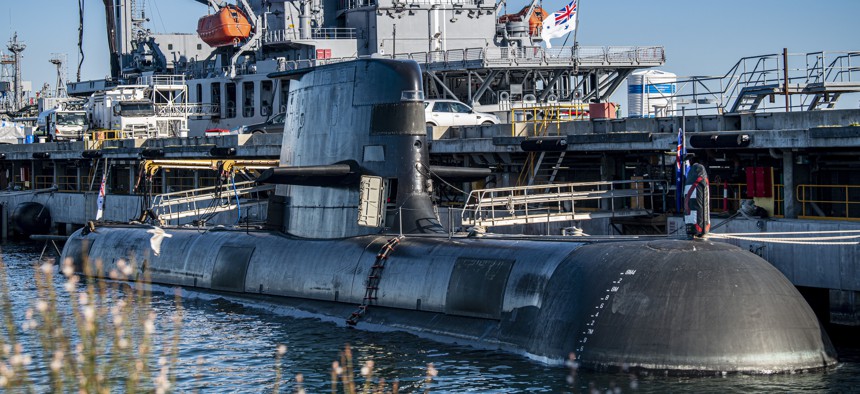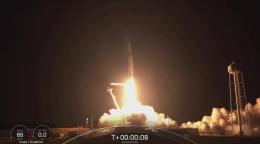Paris Agreement doesn’t include sanctions, but Canada could face tariffs, reputational damage, experts say
Emily Chung · CBC News · Posted: Sep 15, 2021

If the Conservatives are elected as Canada's government this fall, they've indicated they won't meet Canada's current greenhouse gas emissions targets under the Paris Agreement.
What does that mean? And what could the consequences be? Here's a closer look.
What kinds of targets do countries set under the Paris Agreement?
Under the 2015 Paris Agreement, Canada and 195 other countries have committed to cutting greenhouse gas emissions enough to limit global warming to well below 2 C, and ideally 1.5 C compared to pre-industrial temperatures, in order to prevent the worst impacts of climate change, from extreme weather damage to rising seas.
As part of the United Nations treaty, which is legally binding, countries are required to submit plans and targets to cut greenhouse gas emissions called nationally determined contributions (NDCs) in order to reach the global target as soon as possible.
What are Canada's Paris Agreement targets — and why have they changed?
Canada's original NDC, submitted by Stephen Harper's Conservative government, committed to cutting annual emissions 30 per cent below 2005 levels by 2030, from 732 megatonnes to 513 megatonnes.
However, under the Paris Agreement, countries submit new, "increasingly ambitious" NDCs every five years, and were required to send new ones in by 2020, according to the United Nations.
In April, Prime Minister Justin Trudeau announced Canada's new target was to reduce emissions by 40 to 45 per cent below 2005 levels by 2030, requiring emissions to drop to at least 439 megatonnes by the end of the decade. The target was formally submitted to the United Nations in July.
But wait, didn't Erin O'Toole say the Conservatives will meet the Paris objectives?
Yes, the Conservative leader has said that throughout the election campaign. He clarified on Aug. 27, "We will meet the Paris objectives that were actually set by the tail end of the Conservative government and signed onto by the Liberal government" — that is, the outdated 30 per cent emissions cut, rather than Canada's current commitment of 40 per cent.
Kathryn Harrison, a political science professor at the University of British Columbia, said she thinks O'Toole's claim is misleading. "In fact, that's not Canada's Paris Agreement target anymore."
O'Toole would cut emissions to meet target set by Harper, rejects Liberals' new, more aggressive goal
Trudeau pledges to slash greenhouse gas emissions by at least 40% by 2030
The Liberals, NDP and Green Party all say they will meet or exceed the new 40 to 45 per cent target.
O'Toole told undecided voters this week that he is not going to try to out-target his opponents just to get elected, but was proposing a plan that he felt his government could hit without damaging the economy.
"What we have to do is make sure we deliver," he said.
Yes. "A Party may at any time adjust its existing nationally determined contribution," the Paris Agreement says, "with a view to enhancing its level of ambition." That is, while changes are allowed, downgrading is against the spirit of the agreement.
CBC News reached out to the Conservative Party of Canada to ask if they planned to change or withdraw their 30 per cent commitment, but they had not responded to the questions by Wednesday. (They did send a quote of Erin O'Toole talking in general terms about Conservative climate change policy).That said, they've indicated that any change would not increase Canada's level of ambition in cutting greenhouse gases.
If a target is lowered, can a country be penalized?
No, not under the Paris Agreement itself.
Jutta Brunnée, professor and dean in the University of Toronto's faculty of law, said countries' legally binding obligation under the Paris Agreement is to prepare and communicate their climate targets and plans. That forces countries to be transparent about their climate action, or lack thereof.
Tipping point? Experts say the Paris agreement changed the climate on climate
ANALYSISFederal climate platforms: What's in them and what sets each apart
But the targets and plans are not themselves legally binding. That means countries can technically downgrade their targets.
"They would not be violating an obligation under the Paris Agreement," Brunnée said, "but they would run counter to the entire normative architecture and the expectations that the agreement rests on."
What the reporting obligations do is make it clear to other countries if someone does set lower targets or fails to meet them.
"So it would become very public if a party went the opposite direction, so to speak," Brunnée said. "And that, I think, has actually proven to be a remarkably strong incentive, and also a kind of a mechanism to get parties to [do] their bit."

Is lowering the target worse than not meeting it?
"They're both equally bad," said Sébastien Jodoin, Canada Research Chair in human rights health and the environment at McGill University's faculty of law.
But they're also equally without penalties under the Paris Agreement.
It's worth noting that even prior to this election, under the Liberal government that set the new targets, Canada was not on track to meet them, according to a report from the Pembina Institute, an energy and climate think-tank.
A new report by the Pembina Institute suggests Canada isn’t on track to meet its climate change targets by 2030 and provinces need to take more responsibility in reducing greenhouse gas emissions. 1:53
The lack of penalties for not fulfilling plans or meeting targets is, in fact, a key difference between the Paris Agreement and its predecessor, the Kyoto Protocol. This was so the Paris Agreement would be adopted by more countries. In fact, the penalties were the reason Canada withdrew from Kyoto in 2011 under Stephen Harper's Conservative government — by not meeting its targets, it was going to be found in non-compliance and would have had to pay $14 billion.
Could there be potential consequences outside the Paris Agreement itself?
Brunnée said governments could face a hit to their reputation domestically and internationally if they fail to meet the expectations of the Paris Agreement.
"I don't think that it looks good on any country," she said.
Lowering targets or explicitly failing to meet targets might also encourage other countries to follow suit, she said. "And if that were to happen, the entire edifice would potentially unravel… This would be something that the other parties [who signed the Paris Agreement] wouldn't take lightly."
To prevent or punish those who go against Paris Agreement expectations, other countries could impose carbon border adjustments, levies or tariffs, which would penalize trading partners that aren't reducing their emissions quickly enough, said Jason MacLean, assistant professor of law at the University of New Brunswick.
"So countries are still free to work either individually or in concert to try and put pressure on other countries [so] that they are living up to their pledges under the Paris Agreement."
ANALYSIS Fear of climate change rust belt has governments considering carbon border levy
ANALYSIS Fact check: have GHG emissions risen under Trudeau?
Jodoin said given that Canada is a trading nation and that our major trading partners, the European Union and the United States, have been releasing more ambitious emissions targets, "that's a real risk for Canada."
But Canada also faces risks domestically, where laws such as the Charter of Rights and Freedoms have built-in penalties for violation, Jodoin said. Activists have launched lawsuits against the government over its alleged failure to take enough action on climate change, one of which is planning an appeal to the Supreme Court after being dismissed by Federal Court in October.
Jodoin said Canada's approach to its Paris obligations could give activists extra ammunition: "You're exposing yourself to the possibility of constitutional litigation."






/https://www.thestar.com/content/dam/thestar/news/canada/2021/09/16/how-we-got-here-a-timeline-of-albertas-response-to-the-covid-19-pandemic/hinshaw.jpg)
/https://www.thestar.com/content/dam/thestar/uploads/2021/09/16/hospitalizations-0.png)
/https://www.thestar.com/content/dam/thestar/news/canada/2021/09/16/how-we-got-here-a-timeline-of-albertas-response-to-the-covid-19-pandemic/stampede3.jpg)
/https://www.thestar.com/content/dam/thestar/news/canada/2021/09/16/how-we-got-here-a-timeline-of-albertas-response-to-the-covid-19-pandemic/protest.jpg)
/https://www.thestar.com/content/dam/thestar/uploads/2021/09/16/canadamap-0.png)




